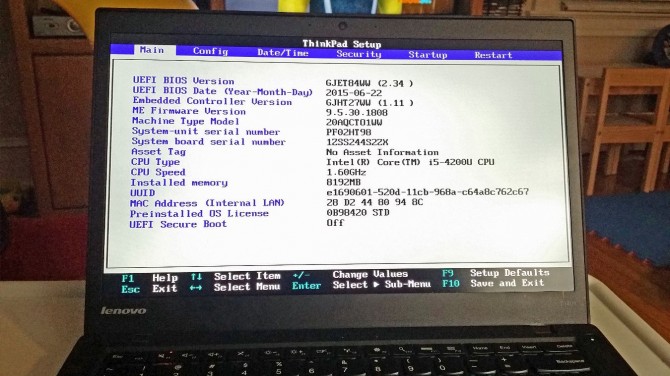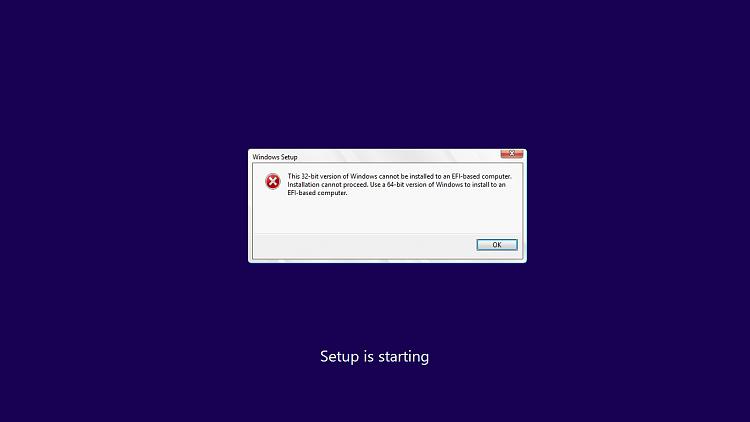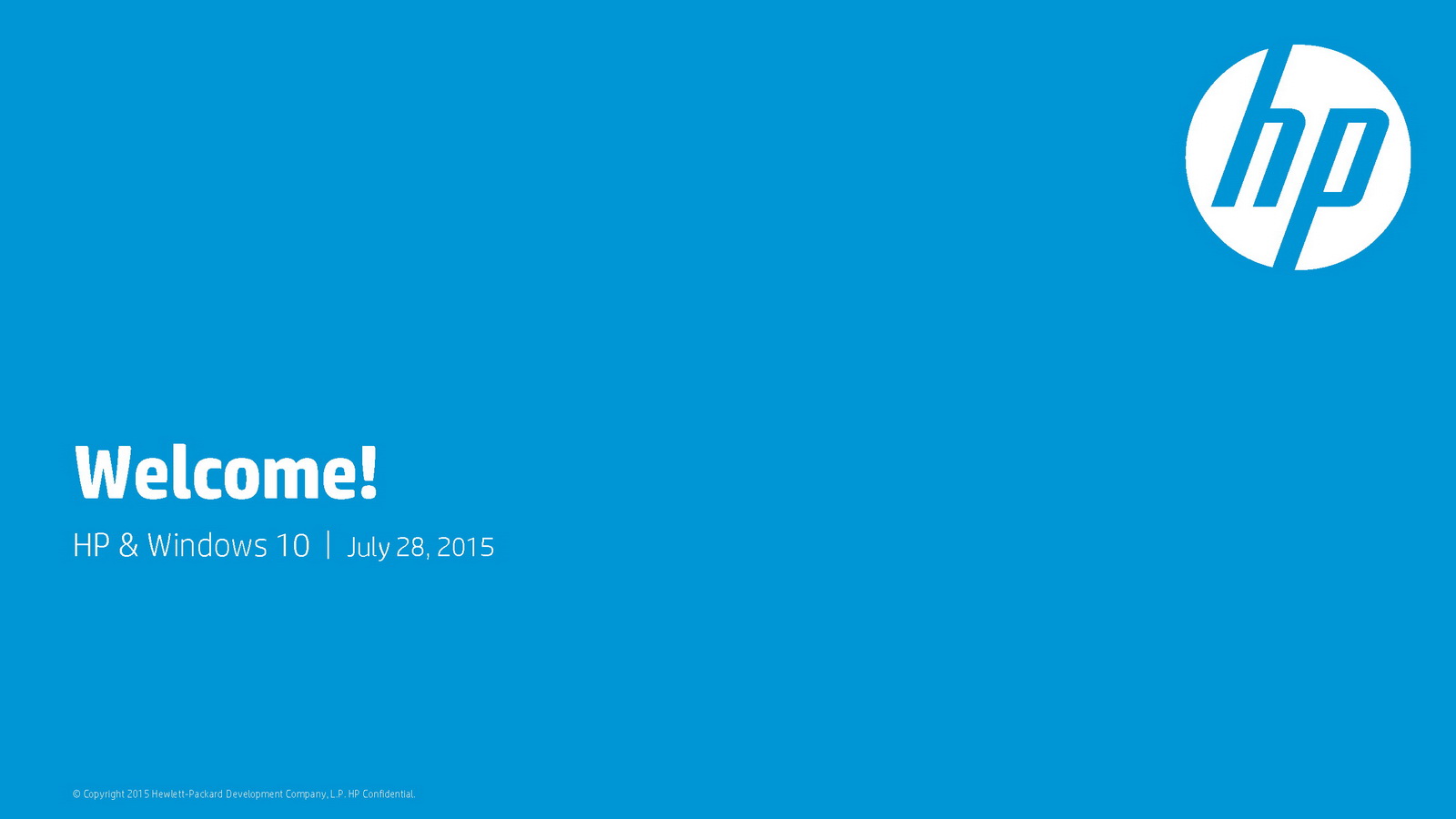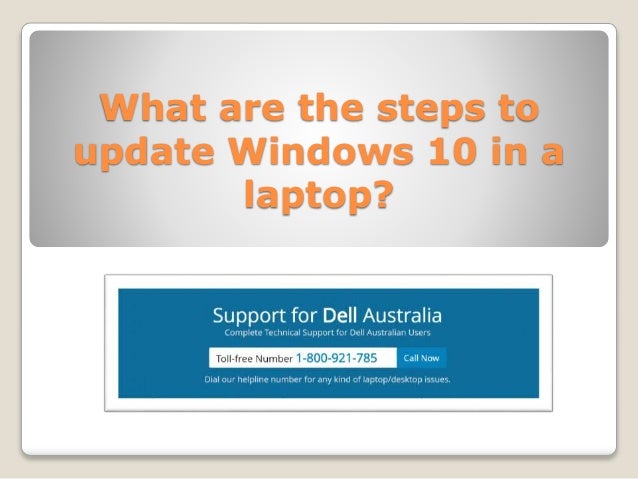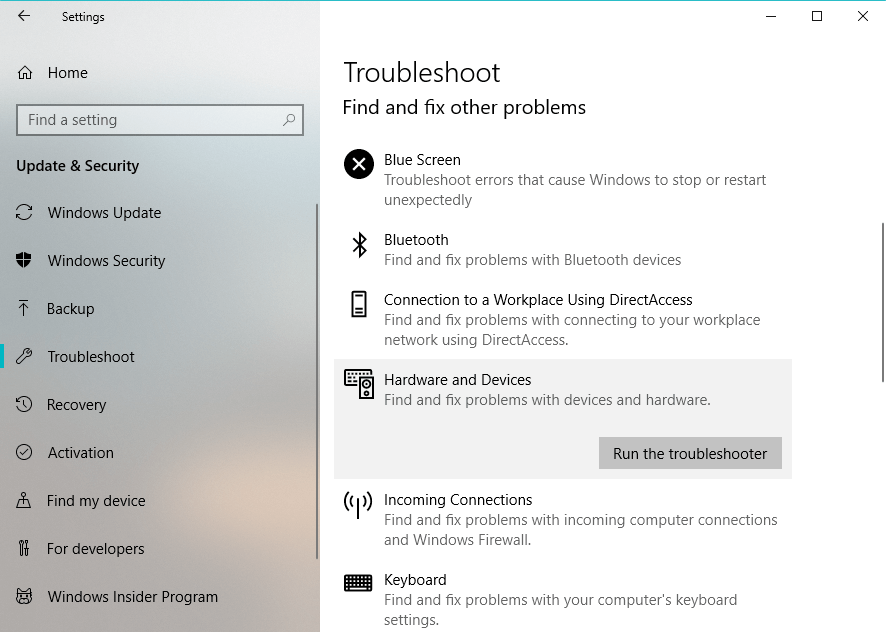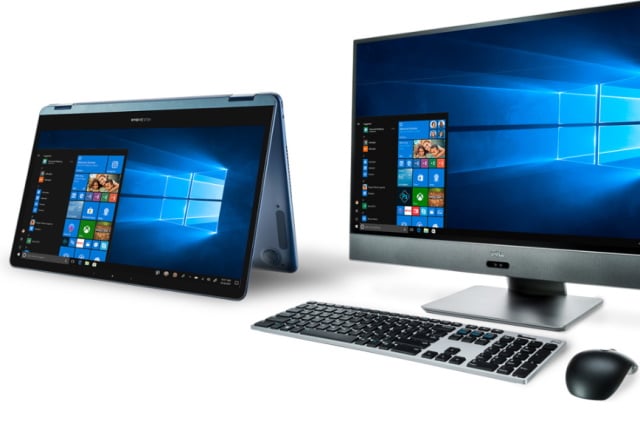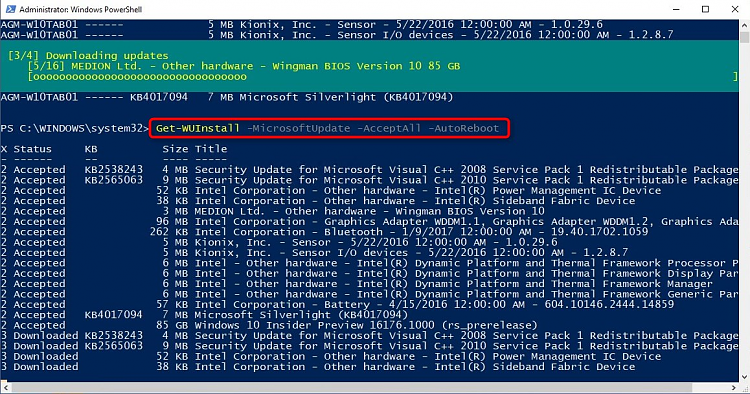Using the same approach as in previous versions with Machine Learning and Artificial Intelligence technologies, Microsoft will begin the gradual and very slow rollout on Windows 11 on Oct. 5. Initially, the deployment will start with newer devices that meet the minimum hardware requirements and have a good upgrade experience. Also, on this day, retailers and computer companies (Dell, HP, ASUS, Acer, etc.) will begin shipping many of their new laptops and desktops with Windows 11 pre-installed. Windows 11 has higher technical requirements than Windows 10, is possible to install Windows 11 on devices that don't meet the minimum requirements.
Upgrading unsupported hardware to Windows 11 will require you to install the update manually using an ISO. There is a different set of minimum minimum requirements your PC will have to meet including 4GB of RAM, 64GB of storage space, and two-core 64-bit 1 GHz processor. The official, release version of Windows 11 is now available as a free upgrade to anyone who has Windows 10 and a PC that meets Microsoft's minimum hardware requirements.
However, the Redmond software giant isn't pushing the upgrade to every eligible system at once. Some users will be offered the option to upgrade in their Settings menu on or around the October 5th official launch date while others may be waiting until 2022. The "windows insider" page says that my pc doesn't meet the minimum requirements for windows 11 but still i can still install the update through dev channel, so should i still install it? Btw also checked the official microsoft website and it says that i need to be degrading back to w10. So if possible please tell us how to revert back to windows 10 from 11. With its machine learning technology, Microsoft has determined further devices on which the Windows 11 update prompt should now appear automatically.
The Redmond-based software company has not revealed any additional information on which exact PC configurations are included in this third group. However, manually triggering the Windows 11 update, which is how many tech enthusiasts probably installed Windows 11 in the past weeks, is no longer necessary on these PCs. Users can simply check the regular Windows Update application in order to verify whether the Windows 11 upgrade is ready to download on their respective device.
As we release to Windows Insiders and partner with our OEMs, we will test to identify devices running on Intel 7th generation and AMD Zen 1 that may meet our principles. We're committed to sharing updates with you on the results of our testing over time, as well as sharing additional technical blogs. We'll click on the 'download and install' button in Windows Update, and an hour or so later we'll have a different UI with a centre aligned taskbar, a few extra features...
You can use the PC Health Check app to determine if your device is eligible to upgrade to New Windows. Many PCs that are less than four years old will be able to upgrade to New Windows. They must be running the most current version of Windows 10 and meet the minimum hardware requirements. After the tool becomes available, you can download it from this Microsoft support website by clicking the Download Now button under the "Create Windows 11 Installation Media" section.
Then, you can launch the Media Creation Tool, use the USB flash drive option, and continue with the on-screen directions to create the installation media. This option is for users that want to create a bootable installation media or create a virtual machine (.ISO file) to install Windows 11. This download is a multi-edition ISO which uses your product key to unlock the correct edition. This upgrade offers new, intuitive features to help you navigate your PC.
Luckily, you'll be able to upgrade certain Samsung devices starting on October 5, 2021 such as the Galaxy Book Pro360 and Galaxy Book Flex2 Alpha. To begin the process, you can use the PC Health Check app, which is available from the Microsoft website. The app will check if your PC has the recommended system requirements to install Windows 11. You can also upgrade through the Windows Update program on your PC. Windows 11 will be provided as a free update to all eligible devices that are currently running Windows 10. Eligibility for automatic upgrade is based on certain minimum hardware requirements.
Users just need to download the "PC Health Check app" from the company's official website. You can use this app to see if your current PC meets the requirements to run Windows 11. Once you download this app, complete the installation process and click on the "Check Now" button to check if your PC is compatible with Windows 11. With Windows 11, we are focused on increasing security, improving reliability, and ensuring compatibility.
It's not imperative that you upgrade your system to Windows in the next couple of weeks, or even months. For many people, that's about the time to upgrade to a newer device, one that will come with Windows 11 already installed. In this method, you will have to create a bootable USB and manually install Windows 11. It will only wipe the C drive, including files and programs stored within the C drive, and not touch other partitions.
So with that out the way, let's jump to the steps. Fortunately, Microsoft has provided links to stores with compatible computers along with the minimum system requirements. To simplify your choices, I took a look at a Windows 11 compatible laptop from each of the top three laptop makers. These are premium laptops of the kind used in business, but there are many less expensive computers that also run Windows 11. If you buy one of these now, it'll come with Windows 10, but will receive a free upgrade when the new version is available for that machine.
The combination of these features has been shown to reduce malware by 60% on tested devices. To meet the principle, all Windows 11 supported CPUs have an embedded TPM, support secure boot, and support VBS and specific VBS capabilities. But only Windows 10 PCs that are running the most current version of Windows 10 and meet the minimum hardware specifications will be able to upgrade.
You can check to see if you have the latest updates for Windows 10 in Settings/Windows Update. Microsoft has some pretty strict hardware requirements for upgrading to Windows 11. Microsoft's processor lists don't include most 7th gen or older Intel CPUs or first-gen AMD Ryzens. There are more details on the official Windows 11 system requirements page. Microsoft has also provided an option to create a bootable USB drive or DVD from its Windows 11 software page.
Another option is to create installation media on a USB key and install the operating system using that. A final option is to download a Windows 11 disk image to create a bootable installation media such as a USB stick or DVD, or create a virtual machine to install the new Windows software. If you're using Windows 10, installing Windows 11 will feel just like installing a Windows 10 feature update. Microsoft has said exactly that, which means the upgrade process should be pretty easy.
It's also been confirmed that Windows 11 will be a free update for Windows 10 users, as long as their PC is compatible. The free upgrade will start rolling out this holiday and it has no set end date yet, so you should be able to upgrade whenever you feel ready. Windows 11 is now officially available to download. While Microsoft is launching Windows 11-powered hardware worldwide on October 5th, the company has made the OS update available early for eligible devices in New Zealand and beyond. If you've purchased a Windows 10 machine recently, that means you should be able to upgrade to Windows 11 right now. The upgrade rollout plan is being finalized and is scheduled to begin late in 2021 and continue into 2022.
Certain features require specific hardware," Asus said. One of the things I discovered when Microsoft announced Windows 11 is that my three-year-old Lenovo T-Series laptop will not be able to run the new operating system. According to Microsoft's minimum system requirements, you'll need to have enough memory and storage as well as a Trusted Platform Module version 2.0 and a compatible processor. Microsoft has a list of compatible Intel and AMD processors. Anyone running a Windows 10 device will be entitled to get the Windows 11 upgrade, but whether you can run it is another matter entirely.
When Windows 11 was first announced back in June there was some user anger over the minimum specs - which were surprisingly high. (Pocket-lint) - Windows 11 is now rolling out as a free upgrade for Windows 10 users. That means you should be able to download and use Windows 11 right now - as long as your PC meets the minimum system requirements. Since this is an optional upgrade, once Windows 11 becomes available for your computer, you will receive a notification through Windows Update to download and install it manually. The installation experience will be similar to installing a Windows 10 feature update using full reinstallation.
Microsoft offers several ways to download Windows 11 manually. One is to use the Installation Assistant app, which you install on your PC to trigger a normal upgrade install via Windows Update. The second is to use the Windows 11 Media Creation Tool, which automates the process of creating a bootable USB install drive or downloading an install ISO file.
Once you have a USB drive, you can either boot from it to perform a clean install or run the Setup app from within Windows 10 to do a normal upgrade install. You can also burn the ISO to a DVD, but installing from any USB drive, even an old USB 2.0 drive, will be much faster, so you shouldn't do that. Finally, you can just download an ISO file directly from Microsoft's site. Click Next to have Windows 11 check for any updates, then accept the license terms. The Ready to install screen shows that Windows 11 will be installed and that your personal files and apps will be kept.
You can then elect to keep personal files and apps, personal files only, or nothing. Microsoft is offering Windows 11 to newer PCs with Windows 10 installed. It will use data to figure out when other PCs will get the upgrade.
This is similar to how Microsoft has determined which devices received Windows 10 features updates for the past few years. And it's different than how Apple handles updates since Microsoft has to work with lots of partners that also sell Windows computers. Choose Runafter the download to make sure your hardware is compatible. Then Accept and Install to agree to the licensing terms and begin the installation. When the program is finished installing, you'll be prompted to restart your computer.
Your PC might restart several times during the process of finishing the installation, so don't be alarmed. Microsoft is rolling out the OS in phases, so your system might not prompt you to upgrade just yet -- in fact, you might not find it even if you tell your computer to check for updates. Microsoft will offer the free upgrade as it did with Windows 10 for Windows 7 users when it first launched. Minimum hardware requirements to be eligible for the upgrade include that you should have a 64-bit CPU, 4GB or more of RAM and 64GB or more of onboard storage. You'll also need a Microsoft account to get the update too.
The confusion doesn't stop there, as Microsoft has now even published its own guidelines around how to skip its minimum requirements checks in order to get Windows 11 installed on your machine. All despite doubling down on them, and claiming that with those system specs it was going to be able to provide an OS that could deliver a 99.8% crash-free experience. This time, there are major changes in the Operating System with new and interesting features for the users.
Some of these include downloading and running Android apps on the PC, Microsoft Teams updates, changes in the Start menu, etc. Also, the designers have changed the overall look of the Windows that looks more like Mac design. Intel has confirmed IBT is compatible with AMD processors, with more information promised closer to the launch of Windows 11. It's likely current Windows 10 laptops sold with an AMD processor will support IBT, but that can't be guaranteed until a full list of IBT compatible processors is released. If your computer doesn't meet some of the requirements such as storage or memory, you can fix that.
But chances are, you're not going to be able to add a TPM or a new compatible processor. If your computer doesn't meet those requirements, the only real way to upgrade to Windows 11 is to get a new computer. Of course, you can stay with Windows 10, which Microsoft ways will be supported until late 2025. The Surface Go 3 is one of the devices available on the Microsoft Store that comes with Windows 11 pre-installed.
The base model features a Intel Pentium 6500Y processor, 4GB of RAM and 64GB of storage. Windows 10 users have been put on red alert, and warned that upgrading to the Windows 11 OS on an unsupported machine could 'damage' their device. Earlier this week the highly anticipated Windows 11 update was launched, which brings with it the biggest upgrade to Microsoft's iconic OS in years. The Windows 11 update adds a brand new Start Menu, a completely redesigned visual look that touches all UI elements, Microsoft Teams integration, a better update process and much, much more. Finish clicking through the download tool when prompted, after which point the PC will reboot. When it turns back on, the Windows 10 installation prompts will appear, enabling you to finish installing and setting up the machine with a fresh copy of the older operating system.
Microsoft goes into more detail about what a fresh Windows 10 installation means, including the impact it may have on certain software licenses. Double-click the downloaded file to launch the installation tool, then select "Upgrade this PC now" from the "What do you want to do?" prompt. It'll take a while for the tool to get the PC ready for the "upgrade" down to Windows 10, but you'll eventually be asked what files you want to keep. If you've already upgraded to Windows 11, you're probably aware that Microsoft has dropped support for many features. This includes the ability to drag and drop apps onto the taskbar or easily create shortcuts of most used apps by dragging them onto the taskbar of Windows 11.
If you create your own Windows 11 installation media -- a bootable USB flash drive -- you can use it to force an upgrade, even if your system doesn't meet all the requirements. Note that you'll need a drive that has at least 8GB and it will be wiped, so make sure you don't have any data on it that you need to keep. However, not all Windows 10 users will be able to upgrade to Windows 11 as the latest software has a highly selective list of hardware requirements. This means that not all PCs and laptops are compatible with the operating system.
Once Windows 11 releases, you'll be able to download the tool from the Microsoft support website using the blue Download Now button under the "Windows 11 Installation Assistant". Then, you only need to double-click the file to launch the assistant and click the Agree and install button to upgrade manually. Windows 11 is the next major version of Windows, and technically, it's the first one we've had in six years. That's quite a long time, considering new Windows versions used to arrive every three years or so.
The reason this happened though was because Windows 10 was a continuously updating operating system. Instead of only getting new features every two to three years, Windows 10 received feature updates about twice a year. These would add new features and sometimes make pretty big changes. After the download, double-click the ISO file and then double-click the setup.exe file.
